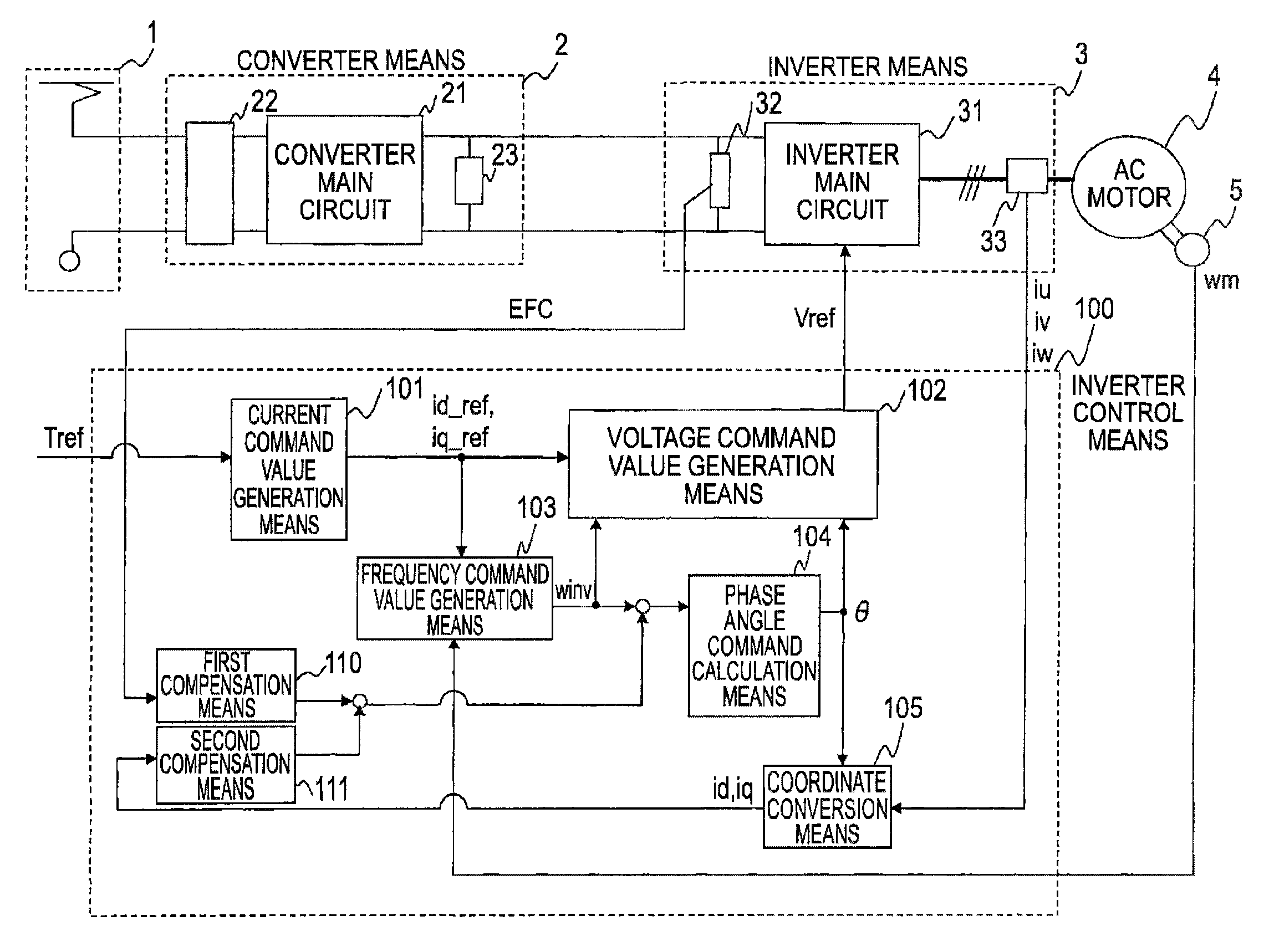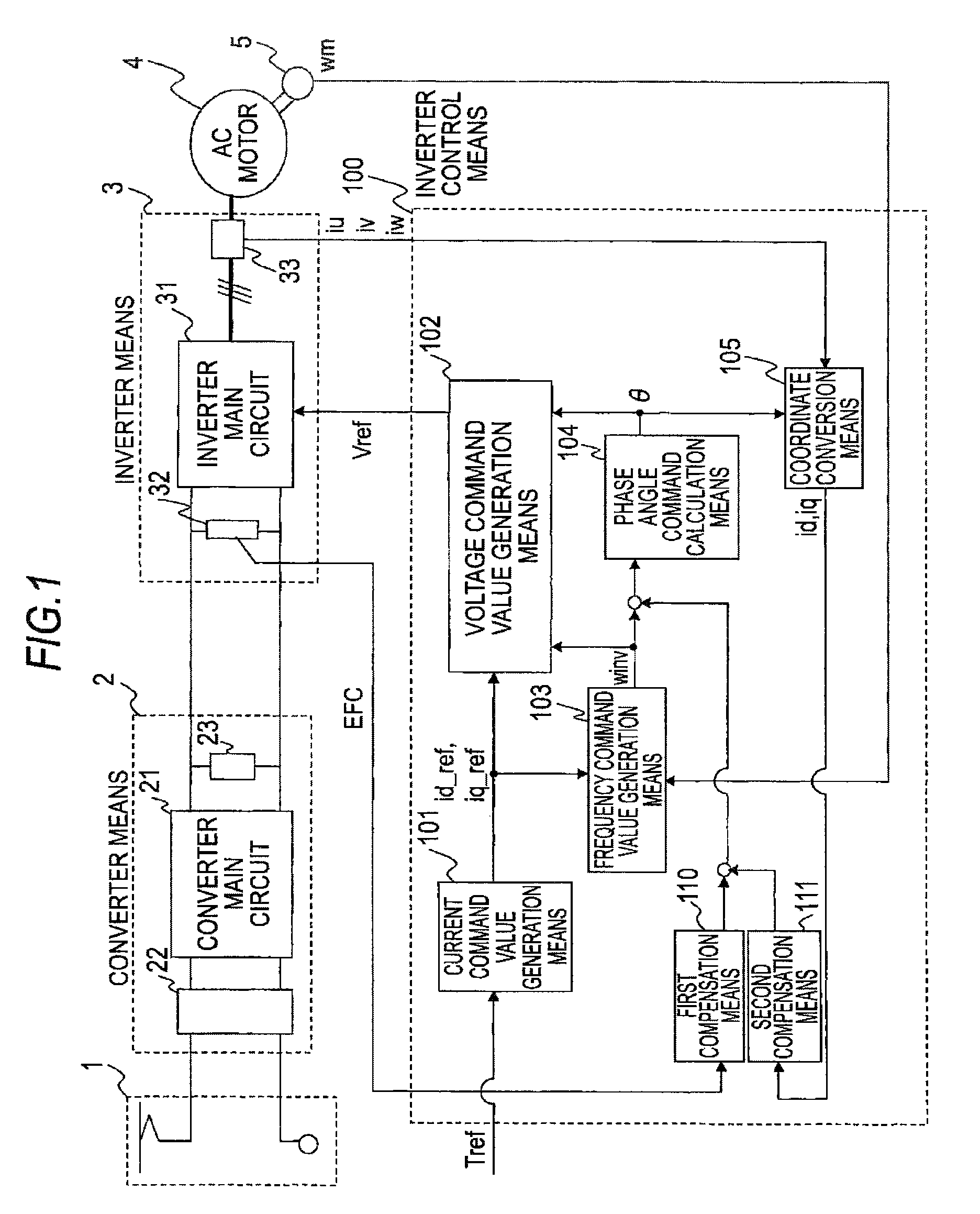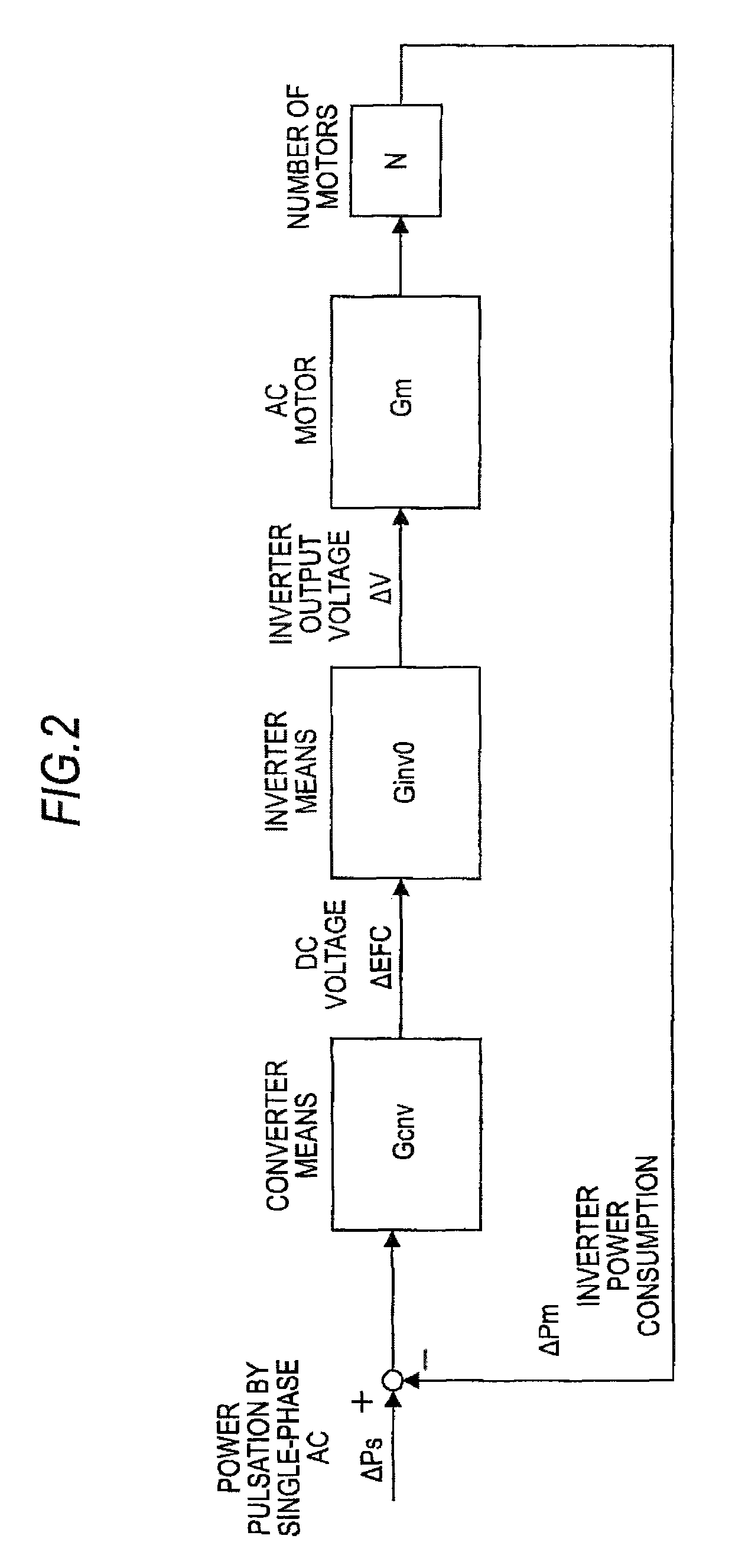Power conversion device
a power conversion device and power technology, applied in the direction of dynamo-electric converter control, program control, instruments, etc., can solve the problem of larger device size, and achieve the effect of improving performan
- Summary
- Abstract
- Description
- Claims
- Application Information
AI Technical Summary
Benefits of technology
Problems solved by technology
Method used
Image
Examples
first embodiment
[0041]FIG. 1 shows an overall configuration of a power conversion device of a first embodiment. Referring to the drawing, a single-phase AC power supply 1 is formed of wiring or a pantograph in the case of an electric rail vehicle using AC wiring and supplies converter means 2 with a single-phase AC voltage from a transformer station.
[0042]The converter means 2 is formed of a converter main circuit 21 made up of semiconductor switching elements, an input transformer 22 that steps down a voltage of the single-phase AC power supply 1, a smoothing capacitor 23, and so on, and is furnished with a function of outputting a DC voltage by rectifying a single-phase AC voltage. Because the principle of its operation is known and not directly relevant the content of this application, a description is omitted herein.
[0043]In a case where single-phase AC is rectified, a DC voltage as an output is superimposed with a pulsation having a frequency component twice the frequency of a single-phase AC ...
second embodiment
[0123]FIG. 17 shows a power conversion device of a second embodiment. The single-phase AC power supply 1, the converter means 2, the inverter means 3, the AC motor 4, and the speed detection means 5 are the same as the respective counterparts in the first embodiment above, and a description is omitted herein.
[0124]A difference from the inverter control means 100 of the first embodiment above and the second compensation means 111 of the first embodiment above are that alpha-numeral 100b denotes inverter control means and an input to second compensation means 111b is the DC voltage EFC instead of the q-axis current. Even when configured in this manner, it becomes possible to obtain the effects same as those of the first embodiment above.
[0125]FIG. 18 shows a block diagram of the transmission characteristics of FIG. 17. Herein, the second compensation means 111b has transmission characteristics Gcp_2 made up of high-pass processing and gain processing and set as in Equation (17) below ...
third embodiment
[0145]FIG. 24 shows a configuration of a third embodiment. The single-phase AC power supply 1, the converter means 2, and the inverter means 3 are the same as the respective counterparts of the first and second embodiments above. On the other hand, a difference from the first and second embodiments above is that an AC motor 4c is a synchronous motor and alpha-numeral 5c denotes position detection means for detecting a magnetic pole position. In addition, inverter control means 100c is means corresponding to a synchronous motor.
[0146]In a case where the AC motor 4c is a synchronous motor, vector control is performed using a rotor magnetic pole position in the synchronous motor as a reference axis. In other words, a magnetic pole position is detected by the phase detection means 5c and an output current of the inverter means is converted by coordinate conversion on dq axes by the coordinate conversion means 105c according to the detected magnetic pole position. Also, current command v...
PUM
 Login to View More
Login to View More Abstract
Description
Claims
Application Information
 Login to View More
Login to View More - R&D
- Intellectual Property
- Life Sciences
- Materials
- Tech Scout
- Unparalleled Data Quality
- Higher Quality Content
- 60% Fewer Hallucinations
Browse by: Latest US Patents, China's latest patents, Technical Efficacy Thesaurus, Application Domain, Technology Topic, Popular Technical Reports.
© 2025 PatSnap. All rights reserved.Legal|Privacy policy|Modern Slavery Act Transparency Statement|Sitemap|About US| Contact US: help@patsnap.com



